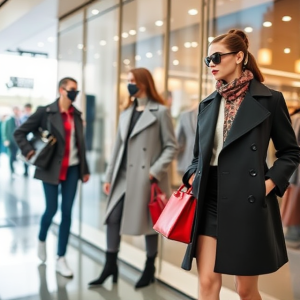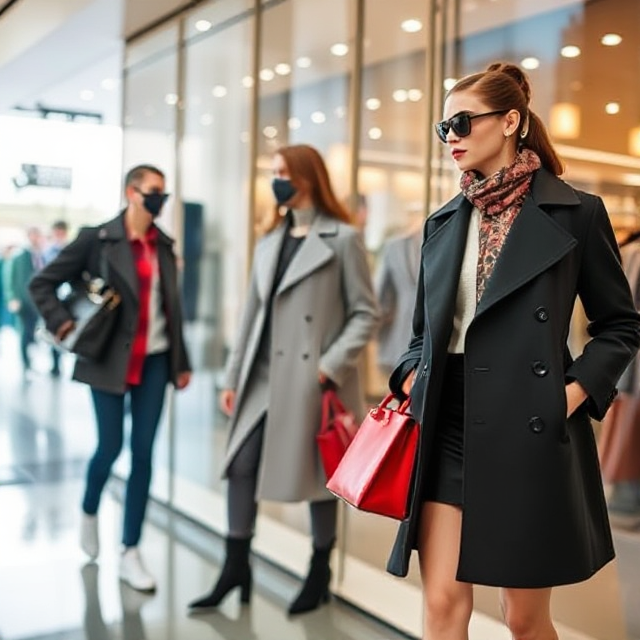
High-ticket fashion marketing is an essential segment of the fashion industry, where the focus is on promoting high-end, luxury fashion products that command premium prices. Unlike mass-market fashion, high-ticket fashion requires a unique, tailored approach to marketing, often leveraging exclusivity, craftsmanship, and aspirational lifestyle elements to captivate a discerning target audience.
In this article, we’ll dive into the nuances of high-ticket fashion marketing, examining its core strategies, challenges, and the role of digital marketing in the modern fashion landscape.
What is High-Ticket Fashion Marketing?
High-ticket fashion marketing refers to the marketing strategies and practices used to promote luxury, designer, or exclusive fashion products. These products are typically priced at a premium, making them accessible only to a select group of consumers. High-ticket fashion brands include renowned names like Chanel, Gucci, Louis Vuitton, Prada, and Hermès, known for their craftsmanship, heritage, and exclusivity.
The goal of high-ticket fashion marketing is not just to drive sales but to build a strong, aspirational brand image that attracts wealthy, fashion-conscious consumers. It often involves creating a narrative around the product that emphasizes its rarity, quality, and the status it confers on its owner.
Key Strategies for High-Ticket Fashion Marketing
- Brand Positioning and Storytelling One of the most critical aspects of high-ticket fashion marketing is brand positioning. Luxury fashion brands often position themselves as the epitome of sophistication, elegance, and exclusivity. This is achieved through compelling storytelling that highlights the heritage, craftsmanship, and timeless appeal of the brand. Consumers buying high-ticket items are not just purchasing a product but are investing in a piece of cultural capital.
Example: The story behind the craftsmanship of a luxury handbag or the meticulous process of designing a couture dress can become a central part of the brand’s identity. - Influencer and Celebrity Endorsements Collaborating with influential figures is a common strategy in luxury fashion marketing. Celebrities, high-profile influencers, and models can lend credibility and desirability to a brand. Their endorsement helps solidify the brand’s status, as consumers often look to these figures for fashion inspiration and validation.
Example: Brands like Dior, Chanel, and Gucci frequently use celebrity endorsements to keep their products in the public eye, with stars like Rihanna, Lady Gaga, and Beyoncé showcasing their collections. - Exclusive Events and Experiences High-ticket fashion brands often host exclusive events, fashion shows, or private parties to create an aura of exclusivity. These events are typically invite-only and cater to a select audience, including celebrities, industry professionals, and high-net-worth individuals. These experiences go beyond just showcasing products; they aim to create a sense of belonging and elite status for those involved.
Example: The annual Met Gala, hosted by the Metropolitan Museum of Art in New York, is an iconic event that blends fashion with culture, attracting the world’s most influential figures and promoting luxury brands in the process. - Premium Pricing Strategy Pricing plays a key role in high-ticket fashion marketing. The perception of value is often linked to the exclusivity and prestige associated with a luxury price tag. High-ticket brands employ premium pricing strategies to maintain the exclusivity of their products, ensuring that they are seen as luxury items that only a select few can afford.
Example: A designer handbag priced at several thousand dollars not only reflects the quality of the materials and labor but also the social status it confers to its owner. - Utilizing Limited Editions and Scarcity Scarcity is a powerful psychological tool in high-ticket fashion marketing. By releasing limited editions or exclusive collections, brands can create a sense of urgency and desirability. Consumers are often more likely to purchase a high-ticket item when they believe it is rare or fleeting, fearing that they may miss out on the opportunity to own something truly unique.
Example: The limited-edition sneakers released by luxury brands like Balenciaga and Louis Vuitton often sell out within minutes, creating buzz and anticipation. - Personalized and Bespoke Services One of the hallmarks of high-ticket fashion marketing is personalized services. Many luxury brands offer bespoke options, where customers can customize their purchases to fit their individual style and preferences. Whether it’s tailoring a suit, choosing the color of a handbag, or even creating a one-of-a-kind piece of jewelry, personalized services enhance the exclusivity of the brand and increase consumer loyalty.
Example: Brands like Rolls-Royce, although not a fashion brand, have mastered the art of offering bespoke luxury services, a model that has been adopted by fashion houses like Gucci and Louis Vuitton, who offer custom tailoring and monogramming.
The Role of Digital Marketing in High-Ticket Fashion
While traditional marketing methods like print ads, television commercials, and billboards continue to play a role in high-ticket fashion, digital marketing has become an indispensable tool for luxury fashion brands. The rise of social media, influencer marketing, and e-commerce has opened up new avenues for reaching affluent consumers, particularly younger generations, in a more direct and personal way.
- Social Media Presence Platforms like Instagram, TikTok, and Pinterest have become essential for luxury brands to showcase their products and connect with their target audience. High-ticket fashion brands use these platforms to share visually stunning content, behind-the-scenes looks, and influencer collaborations, while also fostering a sense of community around the brand.
- E-Commerce and Digital Platforms Although many high-ticket brands are traditionally known for their exclusive brick-and-mortar stores, e-commerce has become an increasingly important sales channel. Online shopping allows consumers to access luxury products from anywhere in the world, and brands like Net-a-Porter, Farfetch, and Mytheresa have become go-to platforms for high-ticket fashion shopping.
Example: Many luxury brands, such as Chanel, initially shied away from online sales but are now embracing digital platforms, offering limited online collections and providing high-touch online customer service experiences. - SEO and Content Marketing High-ticket fashion brands utilize search engine optimization (SEO) and content marketing to drive traffic to their websites and e-commerce platforms. By producing high-quality content, such as blog posts, lookbooks, and videos, luxury brands can engage with consumers on a deeper level, showcasing not only their products but also the lifestyle and values associated with the brand.
- Augmented Reality (AR) and Virtual Fashion As technology continues to evolve, luxury brands are experimenting with augmented reality (AR) and virtual fashion to offer customers innovative ways to interact with products. Virtual try-ons, fashion shows, and even digital-only clothing items are beginning to play a role in how high-ticket brands market their products, allowing customers to engage with the brand in entirely new ways.
Example: Brands like Balenciaga and Gucci have experimented with virtual fashion collections and AR technology to enhance the customer experience and drive digital engagement.
Challenges in High-Ticket Fashion Marketing
- Maintaining Exclusivity As luxury brands seek to expand their reach through digital platforms and influencer marketing, they face the challenge of maintaining the exclusivity and allure that made them desirable in the first place. Overexposure can dilute the perceived value of a high-ticket product, making it less attractive to wealthy consumers.
- Navigating Counterfeit Goods The high value of luxury products makes them prime targets for counterfeiting. High-ticket fashion brands must invest heavily in anti-counterfeiting technologies and strategies to protect their intellectual property and ensure that their products maintain their integrity and exclusivity.
- Balancing Tradition with Innovation Luxury brands are often steeped in tradition and history, which can make it challenging to stay relevant in an ever-evolving digital landscape. Striking the right balance between honoring the brand’s heritage and embracing new marketing technologies is crucial for staying competitive in the high-ticket fashion market.
High-ticket fashion marketing is a sophisticated, multi-faceted discipline that requires a deep understanding of consumer psychology, branding, and digital innovation. By leveraging storytelling, exclusivity, personalization, and digital platforms, luxury fashion brands can create an aspirational image that resonates with their target audience and drives sales.
As the industry continues to evolve, staying ahead of trends and embracing new marketing technologies will be key to maintaining the allure and prestige that define high-ticket fashion. Whether through influencer partnerships, immersive digital experiences, or limited-edition collections, the future of high-ticket fashion marketing is set to be an exciting blend of tradition and innovation.
